
Incarceration and Slavery
in the Middle Ages and
the Early Modern Age
Studies in Medieval Literature
Series Editor: Albrecht Classen, University of Arizona
Advisory Board
Werner Schaefke, University of Copenhagen
Christopher R. Clason, Oakland University
Andrew Breeze, University of Navarre
Connie Scarborough, Texas Tech University
Gloria Allaire, University of Kentucky
Fabian Alfie, University of Arizona
Raymond Cormier, Longwood University
Janina Traxler, Manchester University
Marianne Ailes, University of Bristol
Studies in Medieval Literature invites scholars to publish their most powerful, exciting, and forward-looking studies, which will thus become an excellent platform for medieval studies at large.
Recent Titles
Incarceration and Slavery in the Middle Ages and the Early Modern Age
Cultural-Historical Investigation of the Dark Side in the Pre-modern World
edited by Albrecht Classen
Dante Satiro: Satire in Dante Alighieri's Comedy and Other Works
by Fabian Alfie and Nicolino Applauso
Dantes Comedy and the Ethics of Invective in Medieval Italy: Humor and Evil
by Nicolino Applauso
Prostitution in Medieval and Early Modern Literature: The Dark Side of Sex and Love in the Pre-modern Era
by Albrecht Classen
Chaucers Neoplatonism: Varieties of Love, Friendship, and Community
by John M. Hill
Incarceration and Slavery
in the Middle Ages and
the Early Modern Age
A Cultural-Historical Investigation
of the Dark Side in the Pre-Modern
World
Edited by
Albrecht Classen
LEXINGTON BOOKS
Lanham Boulder New York London
Published by Lexington Books
An imprint of The Rowman & Littlefield Publishing Group, Inc.
4501 Forbes Boulevard, Suite 200, Lanham, Maryland 20706
www.rowman.com
6 Tinworth Street, London SE11 5AL, United Kingdom
Copyright 2021 by The Rowman & Littlefield Publishing Group, Inc.
All rights reserved. No part of this book may be reproduced in any form or by any electronic or mechanical means, including information storage and retrieval systems, without written permission from the publisher, except by a reviewer who may quote passages in a review.
British Library Cataloguing in Publication Information Available
Library of Congress Cataloging-in-Publication Data
Names: Classen, Albrecht, editor.
Title: Incarceration and slavery in the middle ages and the early modern age : a cultural-historical investigation of the dark side in the pre-modern world / [edited by] Albrecht Classen.
Description: Lanham : Lexington Books, 2021. | Series: Studies in medieval literature | Includes bibliographical references and index.
Identifiers: LCCN 2021033915 (print) | LCCN 2021033916 (ebook) | ISBN 9781793648280 (cloth) | ISBN 9781793648297 (ebook)
Subjects: LCSH: ImprisonmentHistory. | SlaveryHistory.
Classification: LCC HV8705 .I53 2021 (print) | LCC HV8705 (ebook) | DDC 365/.9dc23
LC record available at https://lccn.loc.gov/2021033915
LC ebook record available at https://lccn.loc.gov/2021033916
 The paper used in this publication meets the minimum requirements of American National Standard for Information SciencesPermanence of Paper for Printed Library Materials, ANSI/NISO Z39.48-1992.
The paper used in this publication meets the minimum requirements of American National Standard for Information SciencesPermanence of Paper for Printed Library Materials, ANSI/NISO Z39.48-1992.
Contents
Albrecht Classen
Warren Tormey
Chiara Benati
Doaa Omran
Christiane Paulus and Magda Hasabelnaby
Amany El-Sawy
Sarah Whitten
Abel Lorenzo-Rodrguez
Fidel Fajardo-Acosta
Carlee Arnett
Albrecht Classen
Maria Cecilia Ruiz
Sally Abed
Maha Baddar
Daniel F. Pigg
Andreas Lehnertz and Birgit Wiedl
J. Michael Fulton
Filip Hrbek
Thomas Willard
St. Leonard of Limoges, in Front of the Merovingian King Clovis I, Begging Him for the Release of Prisoners
St. Leonard Freeing Prisoners. Austrian Master around 1490
Joseph in Prison with a Butler and a Baker (Getty Museum)
St. Leonard, Wrzburg Cathedral (Dom), Domschatz (Treasury)
Ergastula in Astorga
The Temple of La Cilla in Talavera la Vieja (Extremadura) in the First Decade of Nineteenth Century
Tomb of Saint Leonard Decorated with Prisoner Chains
Adultery and Cat Punishment. Twelfth Century
Cat Scratching Adulterers Back. Twelfth Century
Punishment by Cat
Cat Hawling. 1843
Mamlk Lance Practice from a Furusiyya Manuscript
Hafturfehde of Sorel/Sarah, Daughter of Rabbi Meir Liberman, with Hebrew Signatures of the Rabbis Meir and Judah
Jewry-oath, with the Byline Feifelein der Juden chunch (Feifelein the Jews King) and Several Anti-Jewish Gibes in the Accompanying Text
A Christian Takes an Oath with Upright Fingers
Depiction of a Prison Tower, Murphy Haggadah, Joel ben Simeon, ca. 1455, Italy
Torre Vanga, the Location of the Imprisonment of the Jews during the Trent Blood Libel Trial in 1475
The Tempest, The Names of the Principall Actors in all these Playes, from Mr. William Shakespeares Comedies, Histories, and Tragedies, Faithfully Reproduced in Facsimile from the Edition of 1623
The Tempest, The Names of the Actors, from Mr. William Shakespeares Comedies, Histories, and Tragedies
Albrecht Classen
Although many people throughout time have suffered from being imprisoned for many different reasons, whether due to their own fault or as innocent victims, and although many others have suffered from being victimized by raiders or military opponents and have been made into slaves, we tend not to pay enough attention to those two extreme life situations, especially not in the fields of medieval and early modern literature, art, philosophy, social studies, or religion.
Granted, there are by now a number of historical studies addressing specific issues in the field of law, such as court trials, punishments, and prisons, and even slavery itself has been the topic of a handful of detailed analyses of these issues pertaining to the Middle Ages and early modern age, but we still do not know enough about the general responses to, feelings about, or attitudes concerning both phenomena. What we really miss so far are dedicated analyses of prison as a literary metaphor, or the mental concept of incarceration in philosophical, religious, ethical, and moral terms.
Standard reference works, such as the Dictionary of the Middle Ages, the Lexikon des Mittelalters, the Oxford Dictionary of the Middle Ages, or the Handbook of Medieval Studies all include, if at all, more or less shorter articles addressing those issues, and those are normally accompanied by brief bibliographies. However, we normally do not learn much at all about the personal experiences in prison, the individuals suffering, the feelings of the victims of crime, or of their relatives. What were medieval and early modern prisons like? What was actually a prison, at what time, and in what location? Were all prisoners treated the same way, or did they receive individualized treatment according to their social status?
Of course, already at that time money talked much louder than justice before the law! What were the reasons why some persons were imprisoned, others not, particularly in comparison with today? What crimes were treated in what ways? What methods existed to punish smaller or larger unlawful acts? Did women face the same conditions as men when they broke the law and were apprehended, brought to trial, and thrown into prison, if they were not executed? At what age were individuals regarded as liable for their deeds? Fortunately, we can now rely to some extent on G(uy). Geltners excellent critical survey of the relevant research on medieval prisons, in which he observes:
Next page
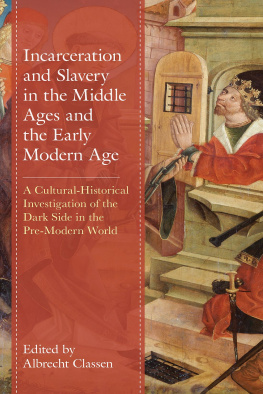
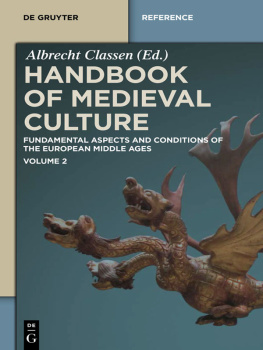

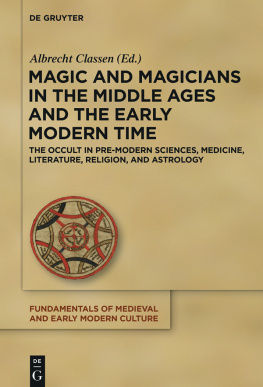


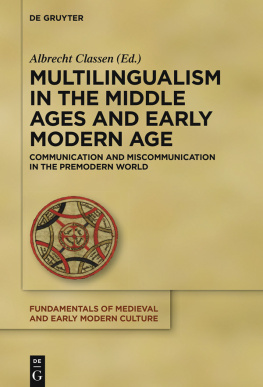

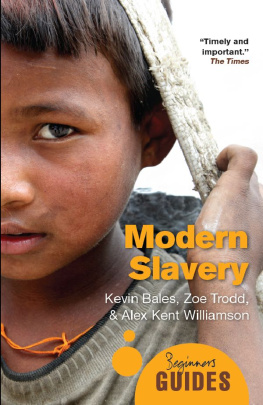
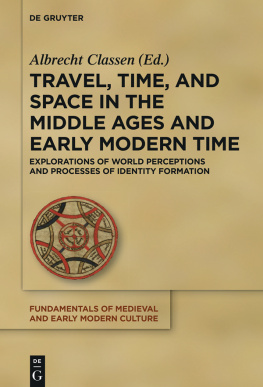
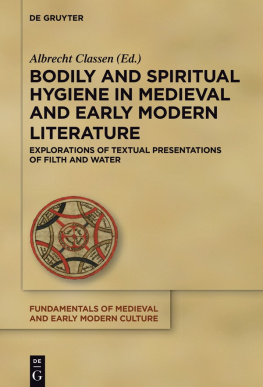
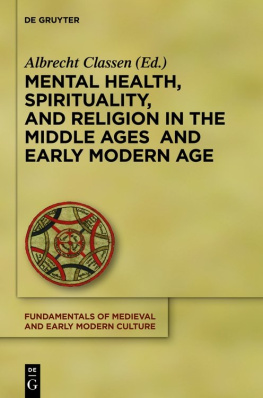

 The paper used in this publication meets the minimum requirements of American National Standard for Information SciencesPermanence of Paper for Printed Library Materials, ANSI/NISO Z39.48-1992.
The paper used in this publication meets the minimum requirements of American National Standard for Information SciencesPermanence of Paper for Printed Library Materials, ANSI/NISO Z39.48-1992.